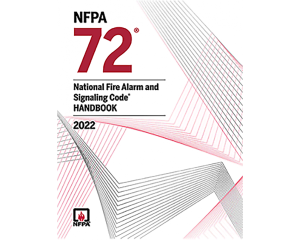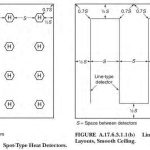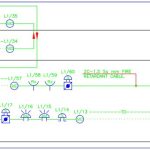Understanding NFPA 72 (2022): Frequently Asked Questions (FAQs)

Welcome to “Understanding NFPA 72 (2022): Frequently Asked Questions (FAQs)”! In this comprehensive guide, we’ll discuss the most common inquiries surrounding fire alarm systems as outlined by the latest edition of NFPA 72. From smoke detection and carbon monoxide detection to the audibility criteria of notification appliances, we’ll cover it all. Explore the intricacies of the installation requirements for initiating devices, notification appliances, and power supply. Whether you’re a seasoned professional or new to the field, these common questions will provide valuable insights into ensuring compliance and safety within your building’s fire alarm system.
NFPA 72 Smoke Detector requirements FAQs
| Sr. No | Common Questions | What does NFPA 72 (2022) say about this? | Reference # |
|---|---|---|---|
| 1 | Does the bedroom and between the bedroom areas need smoke detectors? | Yes. Both areas need smoke detectors. | Annex A.29.8.1 fig.A.29.8.1(b) |
| 2 | Does SD is required in the basement? | Yes, the basement smoke alarm should be installed near the stairs leading to the above floor. | Annex A.29.8.1 |
| 3 | Is a smoke detector required in kitchen or garage? | The installation of SD in kitchens, attics (finished or unfinished), or garages is not recommended because these locations occasionally experience conditions that can result in improper operation. | Annex A.29.8.1 |
| 4 | Is a smoke detector required in the living area(s) of a guest suite? | Yes, SD required in the living area(s) of a guest suite. | Annex A.29.8.1 |
| 5 | Are smoke detectors required in the living area(s) of a residential board and care occupancy? | Yes, SD is required in the living area(s) of a residential board and care occupancy (small facility). | Annex A.29.8.1 |
| 6 | Can smoke alarms and smoke detectors be located where ambient conditions fall outside the limits specified? | Smoke alarms and smoke detectors shall not be located where ambient conditions, including humidity and temperature, are outside the limits specified by the manufacturer’s published instructions. | 29.11.3.4(1) |
| 7 | Can smoke alarms and smoke detectors be installed near a stationary or fixed cooking appliance? | Smoke alarms and smoke detectors shall not be installed between 10 ft and 20 ft along a horizontal flow path from a stationary or fixed cooking appliance. | 29.11.3.4(4) fig. A.29.11.3.4(4)(a) |
| 8 | Can smoke alarms and smoke detectors be installed in a bathroom containing a shower or tub? | Smoke alarms and smoke detectors shall not be installed within a 36 in. horizontal path from a door to a bathroom containing a shower or tub unless listed. | 29.11.3.4(6) |
| 9 | Can smoke alarms and smoke detectors be installed near a forced air heating or cooling system? | Smoke alarms and smoke detectors shall not be installed within a 36 in. horizontal path from the supply registers of a forced air heating or cooling system and shall be installed outside of the direct airflow from those registers. | 29.11.3.4(7) |
| 10 | Can smoke alarms and smoke detectors be installed in rooms with tray-shaped ceilings (coffered ceilings)? | Smoke alarms and smoke detectors shall be installed on the highest portion of the ceiling or on the sloped portion of the ceiling within 12 in. vertically down from the highest point. | 29.11.3.4(11) fig. A.29.11.3.4(11) |
NFPA 72 (2022) – Carbon Monoxide Detection FAQs
| Sr. No | Common Questions | What does NFPA 72 (2022) say about this? | Reference # |
|---|---|---|---|
| 1 | Is a Carbon Monoxide (CO) detector required outside each separate dwelling unit sleeping area? | Yes, a CO detector is required outside each separate dwelling unit sleeping area, within 21 ft of any door to a sleeping room, with the distance measured along a path of travel. | 29.7.1 |
| 2 | Is a Carbon Monoxide (CO) detector required in basements? | Yes, a CO detector is required on every occupiable level of a dwelling unit, including basements. | 29.7.1 |
| 3 | Is a Carbon Monoxide (CO) detector required in attics? | No, a CO detector is not required in attics and crawl spaces. | 29.7.1 |
| 4 | Is a Carbon Monoxide (CO) detector required in sleeping and guest rooms containing installed fuel-burning appliances? | Yes, a CO detector is required in all sleeping rooms and guest rooms containing installed fuel-burning appliances. | 29.7.1 |
Notification Appliances Audibility Criteria FAQs
| Sr. No | Common Questions | What does NFPA 72 (2022) say about this? | Reference # |
|---|---|---|---|
| 1 | In which areas is the audibility of a fire or emergency signal not required? | Audibility of a fire or emergency signal might not be required in all rooms and spaces. For example, a system that is used for general occupant notification should not require audibility of the signal in closets and other spaces that are not considered as occupiable spaces. | A.18.4.1.5.1 |
| 2 | Does a file room require the audibility of a fire or emergency signal? | A file room would be considered occupiable and should have coverage by notification appliances. | A.18.4.1.5.1 |
| 3 | When audibility of a fire or emergency signal is required only in specific locations? | Signaling intended only for staff or emergency forces might only have to be effective in very specific locations. | A.18.4.1.5.1 |
| 4 | When can the requirements for audible signaling be reduced or eliminated? | Where approved by the authority having jurisdiction or other governing codes or standards, the requirements for audible signaling shall be permitted to be reduced or eliminated. | 18.4.5.2 |
Initiating Device Requirements FAQs
| Sr. No | Common Questions | What does NFPA 72 (2022) say about this? | Reference # |
|---|---|---|---|
| 1 | Can smoke and heat detectors be recessed mounted? | Detectors shall not be recessed into the mounting surface unless tested and listed for recessed mounting. | 17.5.1 |
| 2 | Under what circumstances are spaces separated by partitions considered separate rooms? | Where partitions extend to within 15 percent of the ceiling height, the spaces separated by the partitions shall be considered separate rooms. | 17.5.2 |
| 3 | When should the activation of the initiating device occur after water flow at the alarm-initiating device? | Activation of the initiating device shall occur within 90 seconds of water flow at the alarm-initiating device when flow occurs equal to or greater than that from a single sprinkler of the smallest orifice size installed in the system. | 17.13.2 |
| 4 | What color are manual fire alarm boxes typically required? | Unless installed in an environment that precludes the use of red paint or red plastic, manual fire alarm boxes shall be red. | 17.15.9.3 |
| 5 | What is the installation requirement for a Control Valve Supervisory Signal-Initiating Device? | Two separate and distinct signals shall be initiated: one indicating movement of the valve from its normal position (off-normal), and the other indicating restoration of the valve to its normal position. | 17.17.1.1 |
Notification Appliance Requirements FAQs
| Sr. No | Common Questions | What does NFPA 72 (2022) say about this? | Reference # |
|---|---|---|---|
| 1 | When is it necessary to install visual notification appliances? | An average ambient sound level greater than 105 dBA shall require the use of a visual notification appliance(s). | 18.4.1.1 |
| 2 | What is the maximum allowable total sound pressure level when combining ambient sound with audible notification appliances? | The total sound pressure level produced by combining the ambient sound pressure level with all audible notification appliances operating shall not exceed 110 dBA at the minimum hearing distance. | 18.4.1.2 |
| 3 | What type of sound sources should be considered when measuring the maximum ambient sound level? | Sound from normal or permanent sources, having a duration of at least 60 seconds, shall be included when measuring the maximum ambient sound level. | 18.4.1.3 |
| 4 | What type of sound sources are exempt from inclusion when measuring the maximum ambient sound level? | Sound from temporary or abnormal sources lasting less than 60 seconds shall not be required to be included when measuring maximum ambient sound level. | 18.4.1.4 |
| 5 | What are the requirements for the sound level of audible private mode signals to ensure clear audibility? | To ensure that audible private mode signals are clearly heard, they shall have a sound level at least 10 dB above the average ambient sound level or 5 dB above the maximum sound level having a duration of at least 60 seconds, whichever is greater, measured 5 ft above the floor. | 18.4.5.1 |
Power Supply Requirements FAQs
| Sr. No | Common Questions | What does NFPA 72 (2022) say about this? | Reference # |
|---|---|---|---|
| 1 | What are the power supply requirements for Smoke, Heat, and Carbon Monoxide Alarms? | A commercial light and power source along with a secondary power source that is capable of operating the device for at least 7 days in normal conditions, followed by 4 minutes of alarm. Carbon monoxide alarms shall have sufficient capacity to operate the alarm signal(s) for at least 12 continuous hours. | 29.9.1 |
| 2 | Is a secondary power source required for a visual notification appliance? | If a visual notification appliance is used in conjunction with a single- or multiple-station alarm, the notification appliance shall not be required to be supplied with a secondary power source. | 29.9.6 |
For a detailed exploration of NFPA 72 (2022) guidelines regarding fire alarm initiating and notification devices, covering criteria for device coverage, spacing, and optimal location, visit our blog Understanding NFPA 72 (2022): Fire Alarm Guidelines

A dedicated Electrical Engineer with expertise in ISO auditing and a strong passion for sharing insights into the electrifying world of design. With over 5 years of diverse experience, I’ve powered through projects ranging from the manufacturing industry to building construction. My skillset extends to automation building design, where my meticulous electrical drawings ensure precision and attention to detail.




